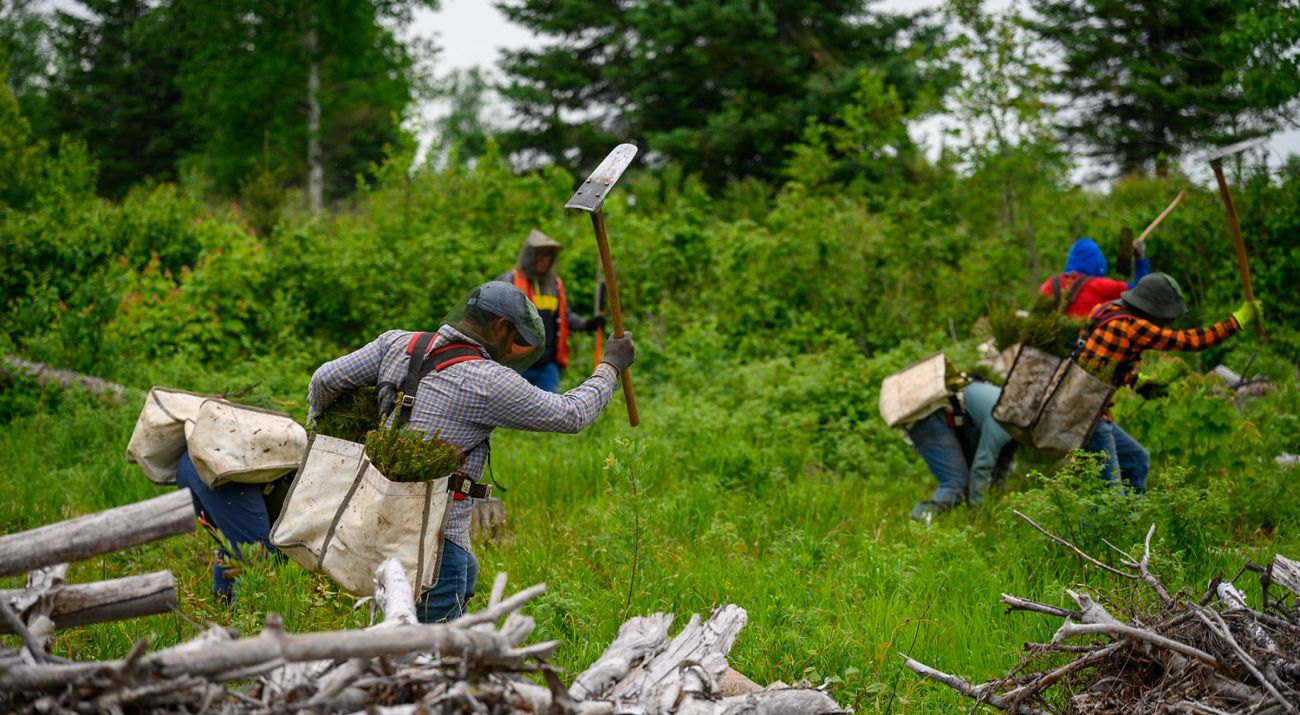The Nature Conservancy Plants 2.3 Million Trees in Minnesota in 2024
TNC in Minnesota has planted more than 10 million trees since 2005 to benefit people and nature.

Media Contacts
-
Anna Rockne
Marketing Director
The Nature Conservancy, Minnesota
Phone: 612-331-0711
Email: anna.rockne@tnc.org
To increase the diversity and resilience of our Northwoods, The Nature Conservancy (TNC) planted 2.3 million trees across partner lands in northern Minnesota in 2024—a record number for TNC. As a result, TNC has now planted more than 10 million trees in the state over the past two decades.
Every spring, TNC partners with the Minnesota Department of Natural Resources, the U.S. Forest Service and local governments to plant tree seedlings. This year’s tree planting efforts in Minnesota shattered TNC’s previous record of 1.4 million trees planted in 2023.
"Climate change will make drought, wildfire and other threats to our forests even more severe,” said Ann Mulholland, director of The Nature Conservancy in Minnesota, North Dakota and South Dakota. “That’s why we are using science-based methods to strategically plant millions of diverse trees in Minnesota. These trees will grow for decades, storing carbon, providing habitat and making the forest more resilient.”
These trees are selected, planted and tended to ensure resilience and longevity in a warming world. The diverse array of trees planted includes 727,000 white pine, 439,000 white spruce, 496,000 red pine, 283,000 jack pine, and thousands of yellow birch, black spruce, tamarack, red oak, bur oak, white cedar and other species.
The trees were planted across the northern half of the state in five counties: Lake, St. Louis, Cook, Cass and Itasca. More than 30,000 trees were planted in Tettegouche, Temperance River and Cascade River state parks. We planted along eight miles of Highway 61, the iconic road along the North Shore, in the Chippewa and Superior national forests, and along more than 20 miles of streams that drain into Lake Superior.
"This ambitious tree planting work requires extensive preparation and collaboration,” said Jim Manolis, director of forest strategy and stewardship for TNC in Minnesota. “Partners like the DNR and the Forest Service make it possible for us to plant millions of trees so we can enhance our forests for carbon storage, water quality and wildlife and support timber-related jobs and products. Forests are also incredibly important for recreation, nature observation and for their cultural and spiritual values.”
This accomplishment would not be possible without the hard work of 65 seasonal guest workers who came from Guatemala and Honduras in 2024 to plant trees and help us meet our goals. Guest workers have planted or tended to 175 million acres of forest in the U.S. in the last 30 years – an area the size of Texas.
The impact of these efforts will be felt for centuries to come. Throughout their long lifetimes, each of these trees has the potential to store carbon, provide habitat for birds and other wildlife and help keep our air and water clean.
Learn more about our work to protect Minnesota’s forests at nature.org/mnforests.
The Nature Conservancy is a global conservation organization dedicated to conserving the lands and waters on which all life depends. Guided by science, we create innovative, on-the-ground solutions to our world’s toughest challenges so that nature and people can thrive together. We are tackling climate change, conserving lands, waters and oceans at an unprecedented scale, providing food and water sustainably and helping make cities more resilient. The Nature Conservancy is working to make a lasting difference around the world in 83 countries and territories (39 by direct conservation impact and 44 through partners) through a collaborative approach that engages local communities, governments, the private sector, and other partners. To learn more, visit nature.org or follow @nature_press on X.


